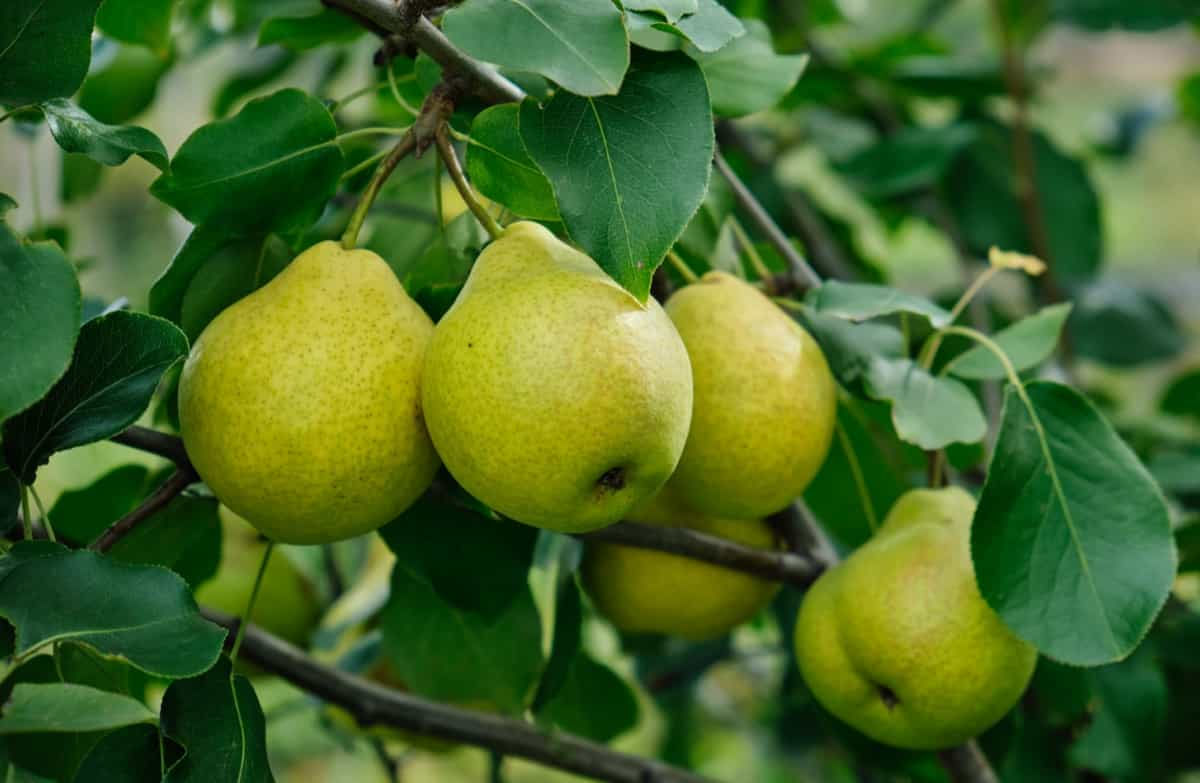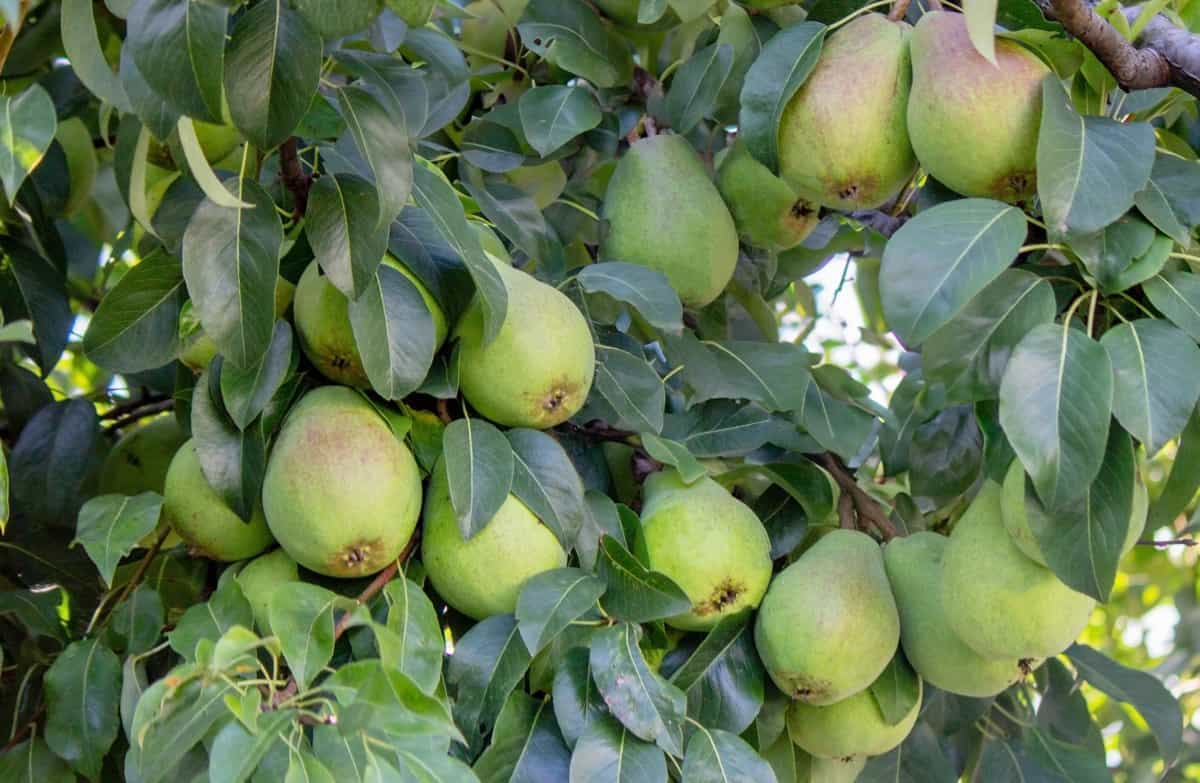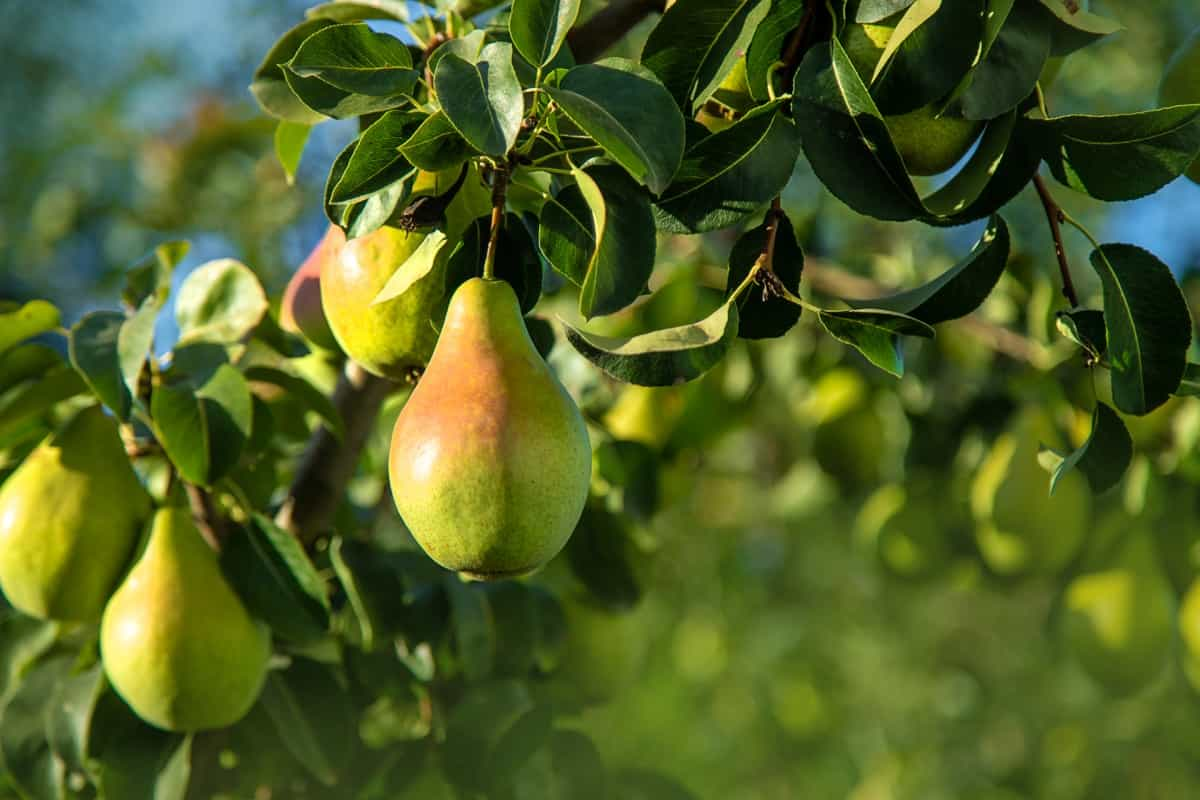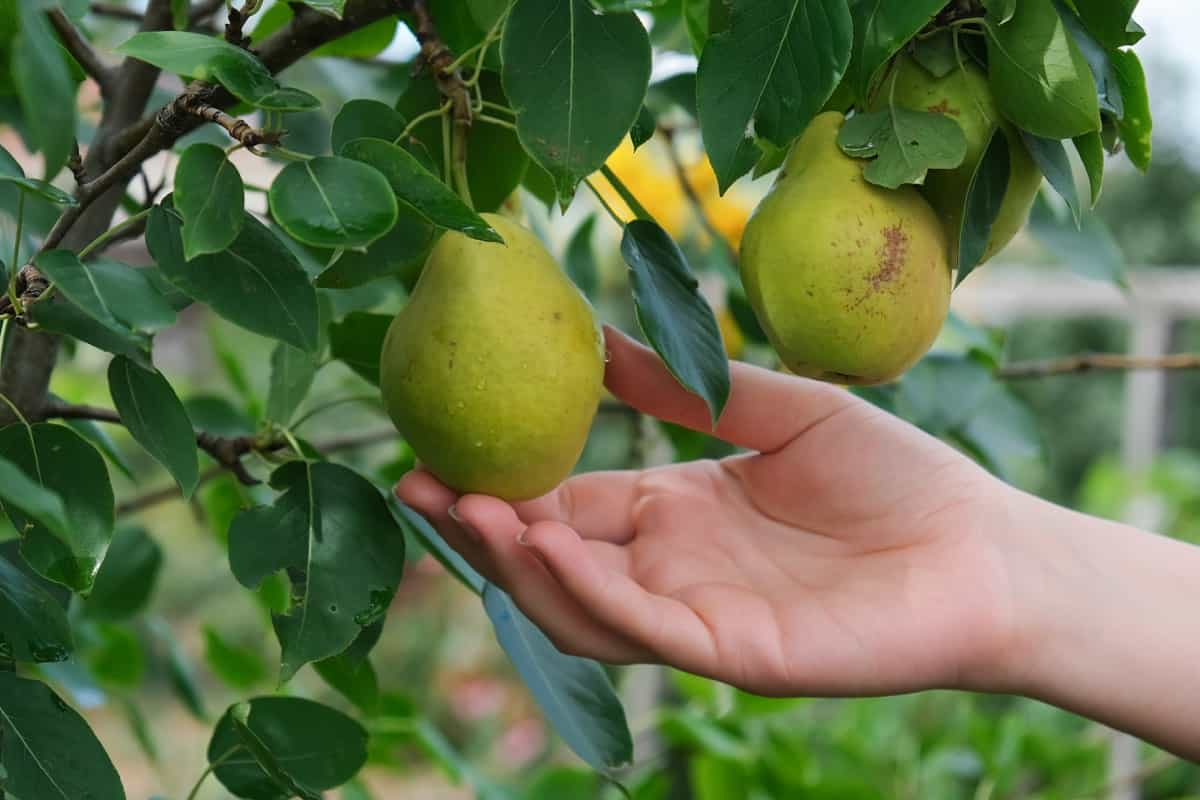Scientifically named Pyrus communis L., these sweet delights belong to the Rosaceae family. Pear fruit splitting can be a frustrating issue for growers, but there are strategies to minimize it. Fruit cracking in Pears is often caused by fluctuations in water supply, leading to rapid growth that the skin can’t keep up with.

All You Need to Know About Fruit Cracking in Pears
Understanding Fruit Cracking
Causes of Fruit Cracking in Pears
It occurs when the outer skin of the Pear can’t keep up with the rapid growth of the inner flesh, leading to unsightly cracks. The causes of fruit cracking in Pears are varied but often linked to environmental factors like sudden changes in weather, fluctuations in moisture levels, or poor soil conditions. These stressors put pressure on the fruit, causing it to crack.
Types of Fruit Cracks
Different types of fruit cracks can affect Pears, including radial cracks that extend from the stem toward the blossom end and concentric cracks encircling the fruit. Understanding these nuances is key to implementing effective strategies for managing fruit cracking in Pears and ensuring your orchard yields beautiful and blemish-free Pears.
Preventive Cultural Practices
Orchard Site Selection
Orchard site selection is the first step towards ensuring healthy Pear trees. Choosing a well-drained location with good air circulation can help prevent Pear fruit cracking. The location should have good air circulation to prevent excess humidity that can lead to fruit cracking. Additionally, selecting a site with well-draining soil helps avoid waterlogged conditions that may contribute to Pear cracking. Adequate sunlight exposure is also important for optimal Pear growth and development.
Proper Tree Spacing
Proper tree spacing is equally important in maintaining the overall health of the Pear orchard. Adequate spacing between trees allows for optimal sunlight exposure and airflow, reducing the risk of Pear fruit damage. By carefully selecting the right orchard site and implementing proper tree spacing, growers can create an environment that supports strong, resilient Pear trees. Adequate spacing also allows for better air circulation, which helps prevent moisture buildup that can contribute to fruit cracking.
Soil Management
Maintaining Soil Health
Soil management is an important factor in a Pear tree’s overall health. Ensuring proper drainage and avoiding waterlogged conditions can help prevent Pear fruit cracking. Combining organic matter into the soil improves its fertility, promoting healthy root development. Regularly testing the soil for pH levels and nutrient deficiencies allows for targeted amendments to be made, ensuring that Pear trees have access to essential nutrients for growth.
In case you missed it: How to Increase Pear Fruit Size: Exploring Optimization for Large Pear Fruit Growth

Optimizing Water Retention
One key aspect of soil management is optimizing water retention. Adequate water retention in the soil helps provide a consistent supply of moisture to the Pear trees, reducing the risk of Pear fruit cracking due to fluctuations in water availability.
Water Management
Irrigation Techniques to Reduce Stress
Proper water management is crucial for growing split-free Pears. Irrigation techniques play a significant role in reducing stress on Pear trees. By providing the right amount of water at the right time, you can help prevent Pear fruit cracking. Regularly adjusting your irrigation schedule accordingly will help maintain a consistent level of hydration for your Pear trees.
Monitoring Soil Moisture Levels
Monitoring moisture levels in the soil is important to ensure that your Pear trees are receiving adequate hydration. Utilizing tools such as moisture meters can help you determine when it’s time to water your orchard.
Nutrient Management
Balanced Fertilization Approach
A balanced fertilization approach is key to ensuring that Pear trees receive the necessary nutrients for optimal growth and fruit development. Whether it’s adjusting fertilizer applications or incorporating organic matter into the soil, addressing nutrient deficiencies proactively will contribute to overall tree health. Remember, well-fed trees are better equipped to withstand environmental stressors and produce high-quality fruits.
Identifying and Correcting Nutrient Deficiencies
Nutrient deficiencies in Pear trees can lead to fruit cracking and other issues. To identify deficiencies, it’s important to monitor the tree’s overall health and look for symptoms such as yellowing leaves or stunted growth. Conduct soil tests to determine which nutrients may be lacking – common deficiencies include nitrogen, potassium, and magnesium.
Once identified, correcting these deficiencies involves applying the appropriate fertilizers or soil amendments. Organic options like compost or manure can help improve nutrient levels naturally over time. Proper care can help prevent nutrient deficiencies from impacting your Pear crop.
Pruning and Thinning
Strategic Pruning for Healthy Growth
Pruning and thinning play crucial roles in ensuring healthy growth and optimal air circulation. Strategic pruning involves carefully trimming branches to promote strong tree structure and fruit development. By removing dead or crowded branches, you allow sunlight and airflow to reach all parts of the tree.
Thinning to Improve Air Circulation
Thinning is another essential practice that involves selectively removing excess fruits from the tree. It also helps prevent branches from bending under the weight of too many fruits, reducing the risk of Pear fruit cracking. Incorporating strategic pruning techniques and regular thinning into your Pear orchard maintenance routine can significantly improve fruit quality and overall tree health over time.
In case you missed it: 1-Acre Pears Farming Project Report: Production Economics, Cost and Profit Analysis

Use of Growth Regulators
Application of Gibberellic Acid
The use of growth regulators like Gibberellic Acid can play a significant role in managing fruit cracking in Pears. These growth regulators help regulate the growth and development of the fruit, promoting healthier and stronger cell structures. By applying it at specific stages of Pear growth, growers can enhance the overall resilience of the fruits against cracking.
Other Growth Regulators and Their Effects
There are other growth regulators available that can also be effective in preventing Pear fruit cracking. Each regulator may have different effects on Pear trees, so it’s essential to understand their specific mechanisms before application. When used correctly and in conjunction with other preventive measures, such as proper soil management and pruning techniques, growth regulators can contribute significantly to producing high-quality Pears with minimal risk of cracking.
Mulching and Ground Cover
Benefits of Mulching
Mulching plays a crucial role in managing fruit cracking in Pears. It helps to retain soil moisture, regulate temperature, suppress weed growth, and improve soil structure. By selecting suitable ground covers like organic mulch or plastic film, you can enhance the effectiveness of mulching in your orchard. Organic mulches such as dry leaves, wood chips, straw, or grass clippings not only conserve moisture but also enrich the soil as it decomposes.
Selecting Suitable Ground Covers
Choosing the right ground cover depends on factors like climate, soil type, and tree age. Mulching with materials that are readily available locally can be cost-effective while still providing benefits for Pear tree health and fruit quality. Experimenting with different types of mulches and ground covers can help you find what works best for your specific orchard environment.
Pest and Disease Control
Integrated Pest Management (IPM)
Integrated Pest Management (IPM) strategies are also essential in controlling pests and diseases that can contribute to fruit cracking. IPM is a sustainable approach that combines biological, cultural, physical, and chemical tools to control pests effectively. By taking a holistic approach to pest and disease management through IPM strategies, you can create a healthy environment for your Pear trees to thrive and produce high-quality fruits.
Preventing Diseases That Contribute to Cracking
Preventing diseases that contribute to fruit cracking is essential for maintaining the quality of your Pears. Regular monitoring of your orchard for signs of common diseases like fire blight and Pear scab can help you take practical measures to prevent outbreaks. Implementing cultural practices such as proper sanitation, pruning infected branches, and using disease-resistant Pear varieties can significantly reduce the risk of diseases impacting your harvest.
Post-Harvest Handling and Storage
Minimizing Damage During Harvest
Minimizing damage during harvest is essential to ensure that your Pears reach consumers in optimal condition. The key strategy is to handle the Pears with care during harvesting. Avoid dropping or tossing them into containers, as this can lead to bruising and cracking. Instead, gently place them in bins or crates to prevent unnecessary damage. Proper storage conditions are also vital for keeping Pears fresh. Store the fruit in a cool, dark place with good ventilation to prevent mold growth and decay.
Optimal Storage Conditions to Prevent Cracking
Optimal storage conditions play a significant role in preventing fruit cracking in Pears. Store the harvested Pears in a cool, dry place with good ventilation. Please make sure not to overcrowd them, as this can promote moisture buildup, increasing the risk of cracking. Inspect the stored Pears regularly for any signs of decay or damage. Remove any affected fruits immediately to prevent spreading issues to other healthy ones.
In case you missed it: Fertilizing Potted Pear Trees: Organic, Natural, Homemade, NPK Ratio, When and How to Apply

Conclusion
Fruit cracking in Pears can occur due to various factors such as excessive water uptake, fluctuations in weather conditions, or poor soil management. By implementing preventive cultural practices like selecting suitable orchard sites and maintaining proper tree spacing, growers can minimize the risk of Pear fruit cracking.
- Feed Your Flock for Less: Top 10 Tips to Save on Chicken Feed
- Ultimate Guide to Ossabaw Island Hog: Breeding, Raising, Diet, and Care
- Hatching Answers: The Top 10 Reasons Your Chickens Aren’t Laying Eggs
- Eggs and Economics: Breaking Down the Cost of Raising Backyard Chickens
- Defend Your Greens: Proven Methods to Keep Iguanas Out of Your Garden
- Ultimate Guide to Cinnamon Queen Chicken: A Comprehensive Guide for Beginners
- Ultimate Guide to California Tan Chicken: Breeding, Raising, Diet, Egg-Production and Care
- Ultimate Guide to Marsh Daisy Chicken: Breeding, Raising, Diet, and Care
- 10 Types of Chicken Farming Businesses You Can Start for Profits